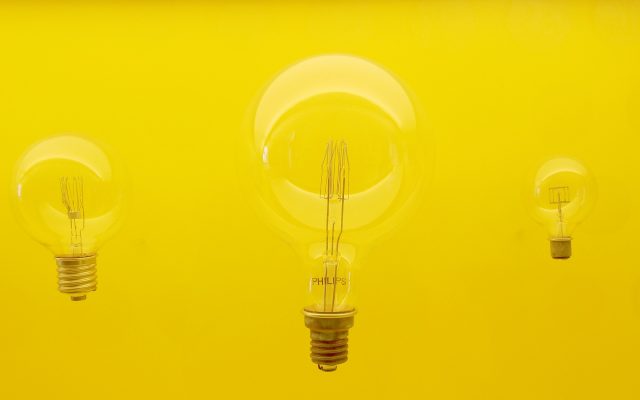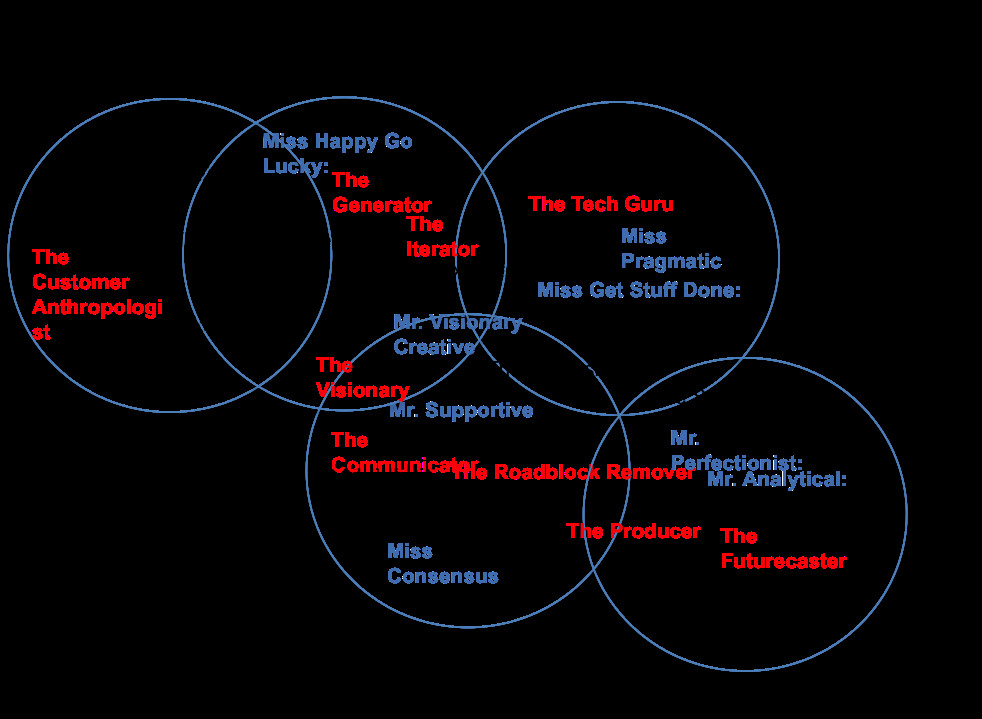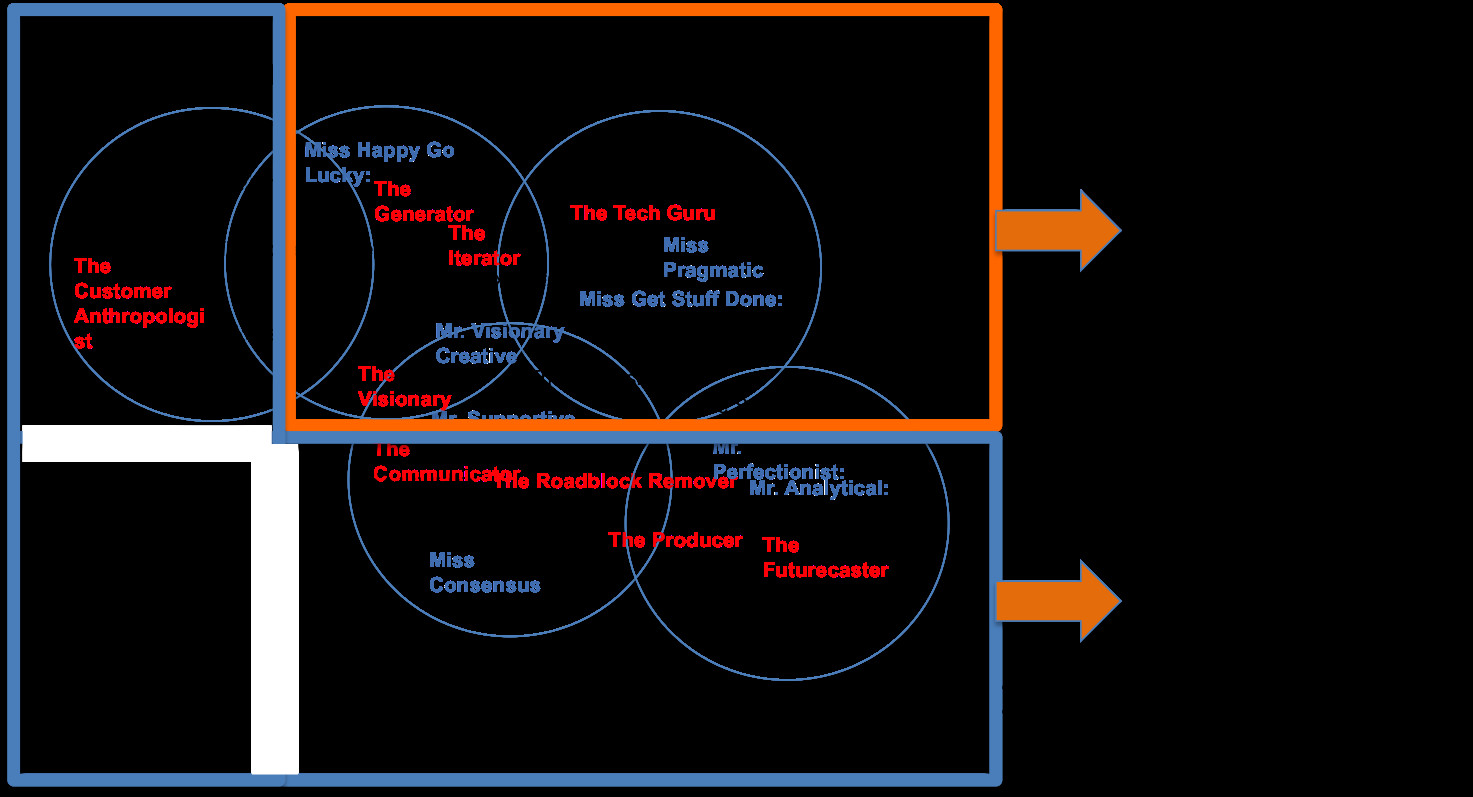Not innovating is not an option anymore… it’s ‘do or die’! Nowadays, there is only one thing that we can be certain of and that is that the speed of change will never be as slow as it is today!
Many technologies are converging and most industries are going through major digital transformations.
Value chains get dismantled, opportunities appear while others vanish. New technologies are constantly amplifying that trend. Today, more than ever innovation is a must for any corporate that doesn’t want to be at risk of getting disrupted.
In an attempt to stay competitive corporates start building up capabilities, with the ultimate goal of creating a new company culture. Companies strive for a culture where everybody is involved in the innovation process, where innovations are harnessed both from within the company and from the outside.
When working on that business transformation, you have usually to start by assessing your capabilities, introduce new ones, rework your processes to make them more agile, and above all create success stories that will inspire all employees.
How to seed innovation?
The question becomes then very quickly about what skills do you actually need to become more innovative and how do you create an environment where the chances of success are increased. Some of the skills are related to the methodologies needed to be systematic in your innovation process, while others are more related to human factors, mindsets and attitudes that will allow you to drive change.
Changing Attitudes
To seed innovation, you have to change peoples mindset and attitudes. What you need here is to seed the organization with people that are strong at convincing others about the change. It is about willingness to take risks, communication, storytelling, positive mindset, embracing diversity, openness to experimentation and failure.
Aptitudes
When it comes to the aptitudes, you need to develop skills in new methodologies that will help you to be more systematic in your innovation approach. It is about learning how to collect insights, how to systematically raise new ideas, how do develop new business models, new concepts, learn to prototype, hack, validate, industrialize and scale.
To be successful with this seeding process it is really essential to have the right persons onboard that can both strategy and execution. Many companies and innovation gurus have come up with traits and capabilities that you need to be able to successfully innovate, they have attempted to describe the roles you need in the perfect innovation team.
The Perfect Innovation teams
IDEO – The 10 faces of innovation
In his book, The 10 Faces of Innovation, Tom Kelly, Founder of design firm IDEO, describes 10 different roles that are key to include in an innovation team. These roles are divided into 3 equally important categories: the learning personas, the organizing personas, and the building personas. Each role brings in a different perspective which is key in the innovation process.
- The Anthropologist (LEARNING) – has the wisdom to observe with a truly open mind, he develops empathy, has intuition and is able to “see” things that have gone unnoticed;
- The Experimenter (LEARNING)-A calculated risk-taker, this person models everything from products to services to proposals in order to efficiently reach a solution
- The Cross-Pollinator (LEARNING)– Draws associations and connections between seemingly unrelated ideas or concepts to break new ground. He brings in big ideas from the outside world to enliven the organization.
- The Hurdler (ORGANIZING)– Problem-solver who gets a charge out of tackling something that’s never been done before. When confronted with a challenge, the Hurdler gracefully sidesteps the obstacle while maintaining a quiet, positive determination.
- The Collaborator (ORGANIZING) -values the team over the individual. In the interest of getting things done, the Collaborator coaxes people out of their work silos to form multidisciplinary teams. In doing so, the person in this role dissolves traditional boundaries within organizations and creates opportunities for team members to assume new roles
- The Director (ORGANIZING) -Understands the bigger picture, has a firm grasp on the pulse of their organization. Subsequently, the Director is talented at setting the stage, targeting opportunities, bringing out the best in their players, and getting things done.
- The Experience Architect (BUILDING)– focused on creating remarkable individual experiences. This person facilitates positive encounters with your organization through products, services, digital interactions, spaces, or events.
- The Set Designer (BUILDING) – To keep up with shifting needs and foster continuous innovation, the Set Designer makes adjustments to a physical space to balance private and collaborative work opportunities.
- The Caregiver (BUILDING) – Through empathy, they work to understand each individual customer and create a relationship. Whether a nurse in a hospital, a salesperson in a retail shop, or a teller at an international financial institution, the Caregiver guides the client through the process to provide them with a comfortable, human-centered experience
- The Storyteller (BUILDING) – captures our imagination with compelling narratives of initiative, hard work, and innovation. This person goes beyond oral tradition to work in whatever medium best fits their skills and message: video, narrative, animation, even comic strips.
MAYO CLINIC – Nine personality types for innovation teams
Mayo Clinic has been using a similar model, to stimulate individuals to take on different roles in the innovation process.
- The Visionary — The force behind creating the world as it could be and should be.
- The Generator — The generator of the idea that gets an innovation rolling.
- The Iterator — An idea-engineer who takes the original idea and turns it into an innovation.
- The Customer Anthropologist — The keen observer of what customers truly hunger for.
- The Tech Guru — The harnesser of technology to turn the innovation into reality.
- The Producer — The champion of flow. The master of moving ideas along.
- The Communicator — Amplifies and clarifies the idea in the minds of others outside the team.
- The Roadblock Remover — With a hammer- or velvet gloves- knocks away organization, political, and financial roadblocks.
- The Futurecaster — The forecaster and modeller of the economic and social value of the future of innovation.
BELL LABS – 8 Key personality types for innovation teams
• Miss Happy Go Lucky: This individual makes sure the team is having fun while they work. Innovation requires elements of playfulness, especially during ideation.
• Mr. Visionary Creative: Great ideas are also driven by creative vision. People who can see the world, not as it is, but as they would want it to be. Every team needs its dreamers and visionaries to fight for the creative ideas that underpin the product idea.
• Miss Pragmatic: The pragmatist makes sure we review our product idea and identify any risky assumptions. They also make sure we test these assumptions before we take our product to market.
• Mr. Analytical: Innovation is also about figuring out a sustainably profitable business model. Both in financial and operational terms, innovation teams need someone with an analytical mind. We are not only creating cool new things, but we are also building a business.
• Miss Get Stuff Done: But please! No analysis paralysis! Innovation is also about getting stuff done. A hard-driving team member pushes us to complete a minimum viable version of the product and ship it to the market early.
• Mr. Perfectionist: Good quality products also ensure that we deliver value to customers in a manner that gets their loyalty to our brand. As learnings from the market inform our iterations, Mr Perfectionist serves as the quality assurance check for our product.
• Miss Consensus: With this cast of characters working together, team meetings can often become contentious. A team member that helps the team collaborate well is highly useful. As much as we want diverse opinions at the table, in the end, we need to make decisions and move forward positively as a team.
• Mr. Supportive: Finally, teams consist of people with different needs. There is an element of innovation teamwork that is about supporting and encouraging each other. For example, failing fast can only work in teams where individuals feel safe to make mistakes.
Is this all too complicated?
When looking at these models, I am wondering whether we are not making it too complicated for us. So what I would like to do is to see whether we can regroup some of these roles and come up with a newer simpler setup.
I would like also to see whether we could get some inspiration from startups which basically have three core roles at the beginning: A Hustler, A Designer and Hacker.
If we look at the 3 earlier models of innovation team role and group taking the initial grouping by IDEO founder, Tom Kelly, we could see that some of the role Mayo Clinic has defined or the ones the Bell has defined wouldn’t fit in these categories, so I decided to add another two.
One between Learning and Building which I call ideating and one after the building prototyping phase which is more about turning the concept into success and being prepared to scale. This new group could help us get new insights.
A model that is closer to the startup model
My feeling is that we need to separate the teams that will actual innovate, which for me are project teams, and the innovation team, which includes innovation managers and innovation champions, which are really more about supporting the innovation process.
In the end, all of the roles defined in the earlier three models would be somehow covered, but I think the important part we miss if we don’t think about project-based setups, is that we set up a team that don’t have the right skills and won’t be able to execute.
I strongly believe that if we use a setup similar to the way startups are working together with a supporting organization, it will become much easier to come up with success corporate innovations.
What are your thoughts on this?
Article by channel:
Everything you need to know about Digital Transformation
The best articles, news and events direct to your inbox
Read more articles tagged: Featured, Innovation, Strategy








